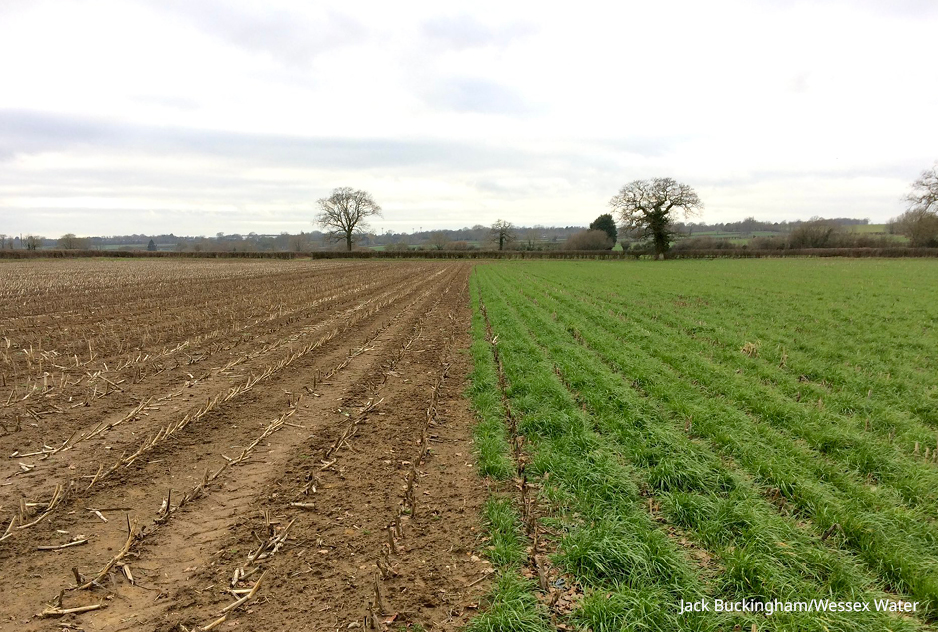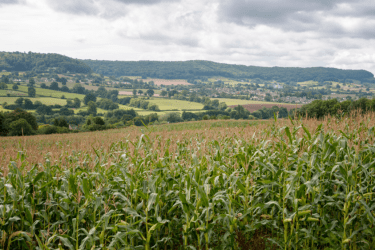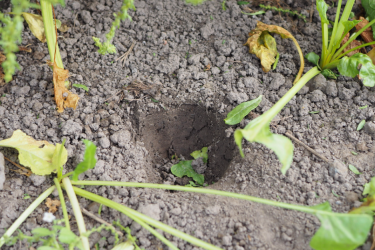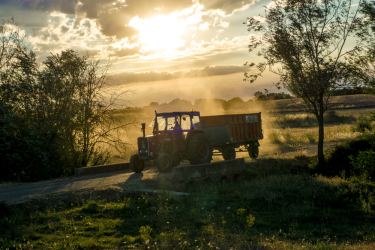Now, this article may seem a little premature, due to the UK’s wet winter and spring of 2023-24. So, you may want to save this post and read it again when you have finished planting your maize. Nonetheless, it is worth considering your plans for undersowing early, and looking at the grants available.
Increasingly, contractors are offering maize undersowing as part of their service. At the same time, the Environment Agency is expressing concern that farmers are not using the practice enough. So, if you have not yet considered it, the information here may help you to see why undersowing maize makes good business sense.
Undersowing provides great soil structure for machinery
By the time of maize harvest, undersown crops have a well-developed root system, which means that soil structure and drainage is much better than if left unplanted. Harvesters and trailers will have less of an impact on soil structure and will not compact the ground as severely. This will be particularly good in wetter weather, where your cover crop can save your vehicles from getting stuck.
Furthermore, with stable ground you will not have to worry about cropping this year’s late-maturing maize early. Thus, you are more likely to achieve high quality maize, harvested at its target dry matter.
Less bare ground over winter
As multiple surveys and reports show, including this one from the Environment Agency, there is significant nutrient and sediment pollution in most UK watercourses. Bare ground over winter is a major contributor to this, as heavy rain disturbs the soil causing surface run-off and erosion. The lost topsoil contains key nutrients, especially phosphate, which contributes to eutrophication in watercourses. Sediment loss from fields can change the depth of watercourses, affecting aquatic habitats.
Better nitrogen retention
Typically, nitrogen is lost via leaching (moving down through the soil profile into groundwater). This is particularly prevalent when bare ground experiences high rainfall. As a result, when the next spring arrives, you will need to add nitrogen to your land in larger quantities than it would otherwise require.
However, if you grow a winter crop that requires nitrogen for maintenance or growth, you will lose less of it through leaching. Instead, the growing plants will draw it up through their roots and hold it. When you harvest or destroy that crop, either your animals will consume it, or it will be released back into the soil as it decomposes. Once you have removed the crop, your land will have only a brief period in which rain-induced leaching is a risk before your new spring crop begins to use it.
Your own experience and experimentation will tell you in time whether this means you can reduce your nitrogen requirement for the following crop. It depends on what you do with the cover crop, rainfall, and when you pre-drill the spring crop.
Early research has shown that there could be a reduction in nitrogen fertiliser requirement for the spring-growing crop. However local rainfall, crop species, cover crop destruction timing, and drilling date of spring crop will affect the exact quantity of nitrogen that is available.
Increased organic matter
Having crops growing above the surface means that there are growing and dying roots in the soil. These contribute to soil organic matter, which provide:
- better water and nutrient retention,
- warmer soils, which brings greater microbial activity and therefore more nutrient release. In turn this brings better water holding capacity, and better nutrient holding capacity.
Early spring crop for grazing or harvesting
If you have been able to establish a grazing or cutting crop in June, rather than after harvest in September/October, you will have greater yields in spring, when the crop may see an early graze or an early first-cut. This means you will have an extra crop per field, per year, and is the easiest way to financially quantify the benefit of cover/undersown cropping.
Consider your yield per-acre cut and then investigate the cost of buying that tonnage instead. It makes the seed and contracting cost more worthwhile, especially if you consider that the artificial nutrients applied to that cover crop are likely to be low or zero, due to the residual nutrient from the maize crop, which will feed it through autumn.
When is the best time for undersowing maize?
Ideally, you should undersow your maize at the 4-5 leaf stage. You may be considering your post-harvest cover crops instead, where summer moisture may be more of an issue. It is never too early to plan this and now is the time to consider whether there is grant funding available that would suit you in financially supporting those cover crops.
Choosing what to undersow
Most farmers choose to undersow their maize with grass. However, you should consider the variety you sow, and much of this depends on when you will be planting.
- An Italian or perennial ryegrass is suitable if establishing in June or later, when growth needs to be vigorous
- For an early-undersown crop, a slower-growing species such as a fescue is good, to reduce early competition for the maize.
- If you are planning to leave the ley post-spring, consider undersowing with a straight clover and/or grass/clover mixes.
Grant Opportunities
If you are someone that needs tangible income from your cover cropping, grant funding is available to help you.
Water companies are offering support to reduce phosphate pressure in watercourses, which includes help with cover cropping. Additionally, Sustainable Farming Incentive (SFI) has options that suit both undersowing and post-harvest cover cropping.
- SAM2/CSAM2: Multi-species winter cover pays £129 per hectare for having two species in place over winter and there are no restrictions on maize harvest date
- IMP3/CIPM3: Companion crop on arable and horticultural land pays £55 per hectare for undersowing, intercropping, or trap cropping.
- SOH4: Winter cover following maize crops pays £203 per hectare to establish and maintain either an undersown crop or fast-growing post-harvest cover crop which must remain over winter.
The Maize Growers Association have conducted undersowing trials, so if you would like to see evidence before you try it for yourself, contact them for figures and feedback.
We can help you
If you would like any support with planning your winter cover, or accessing grant funding to help with costs, please contact me, Sarah Tucker, on 07977 372443.








